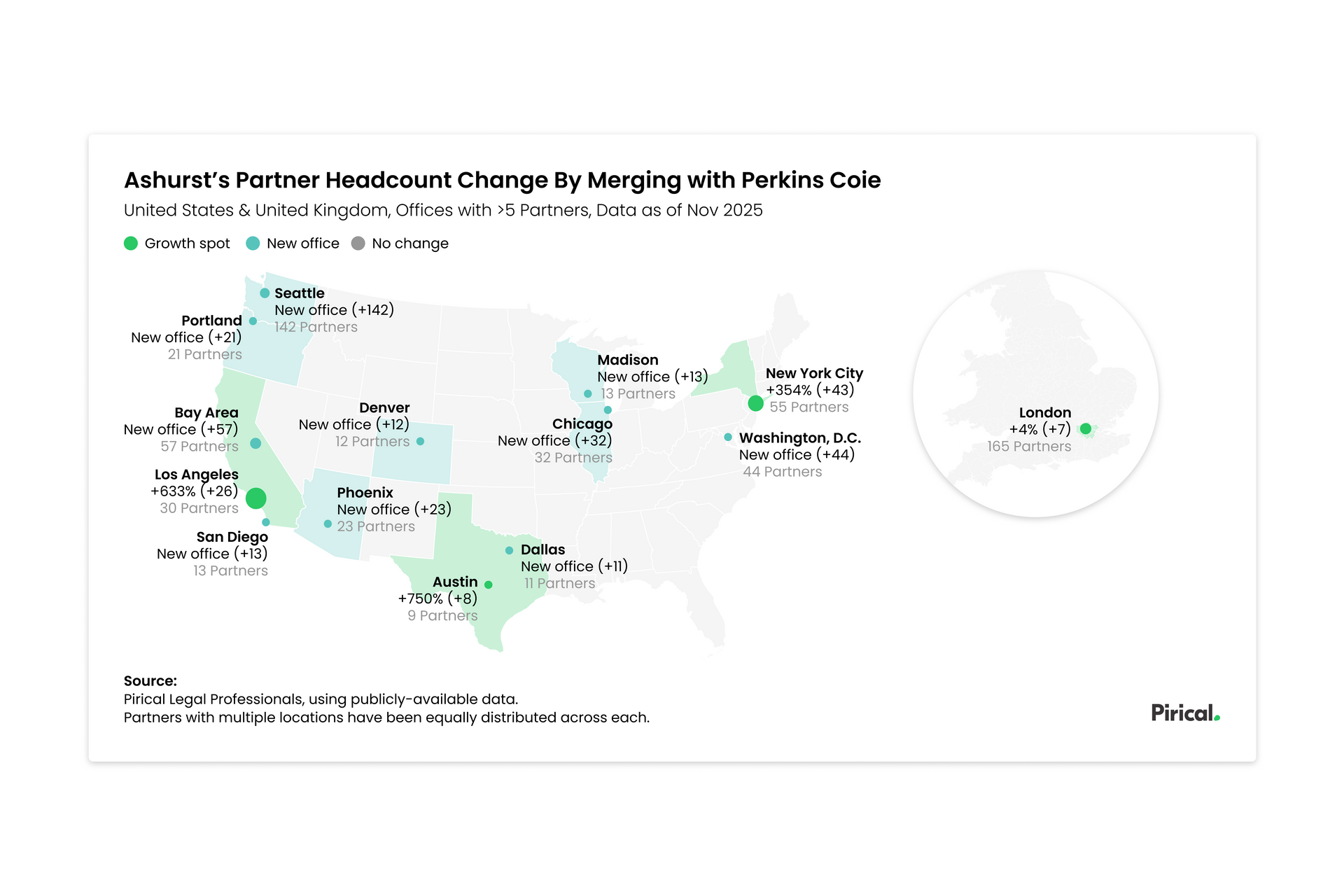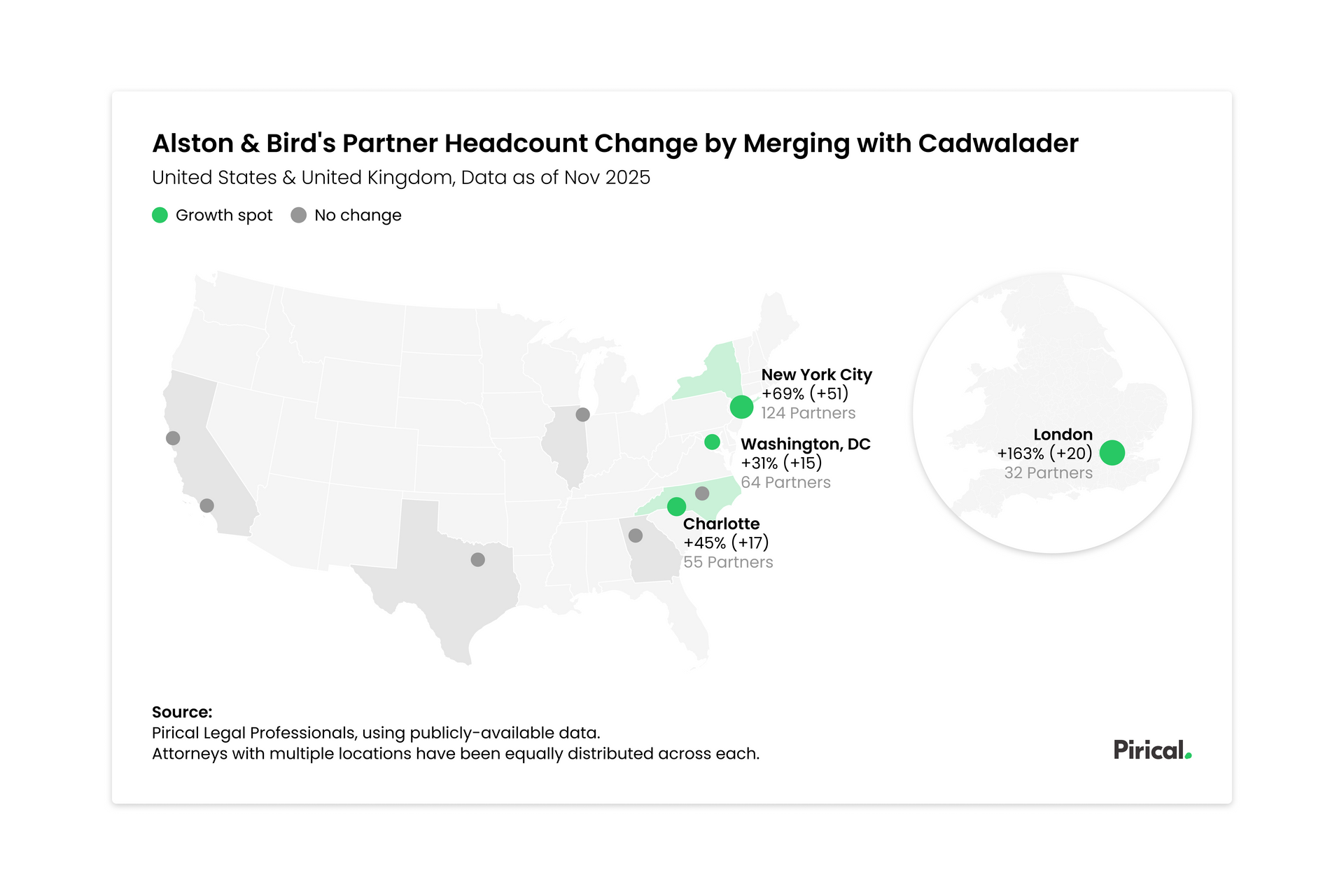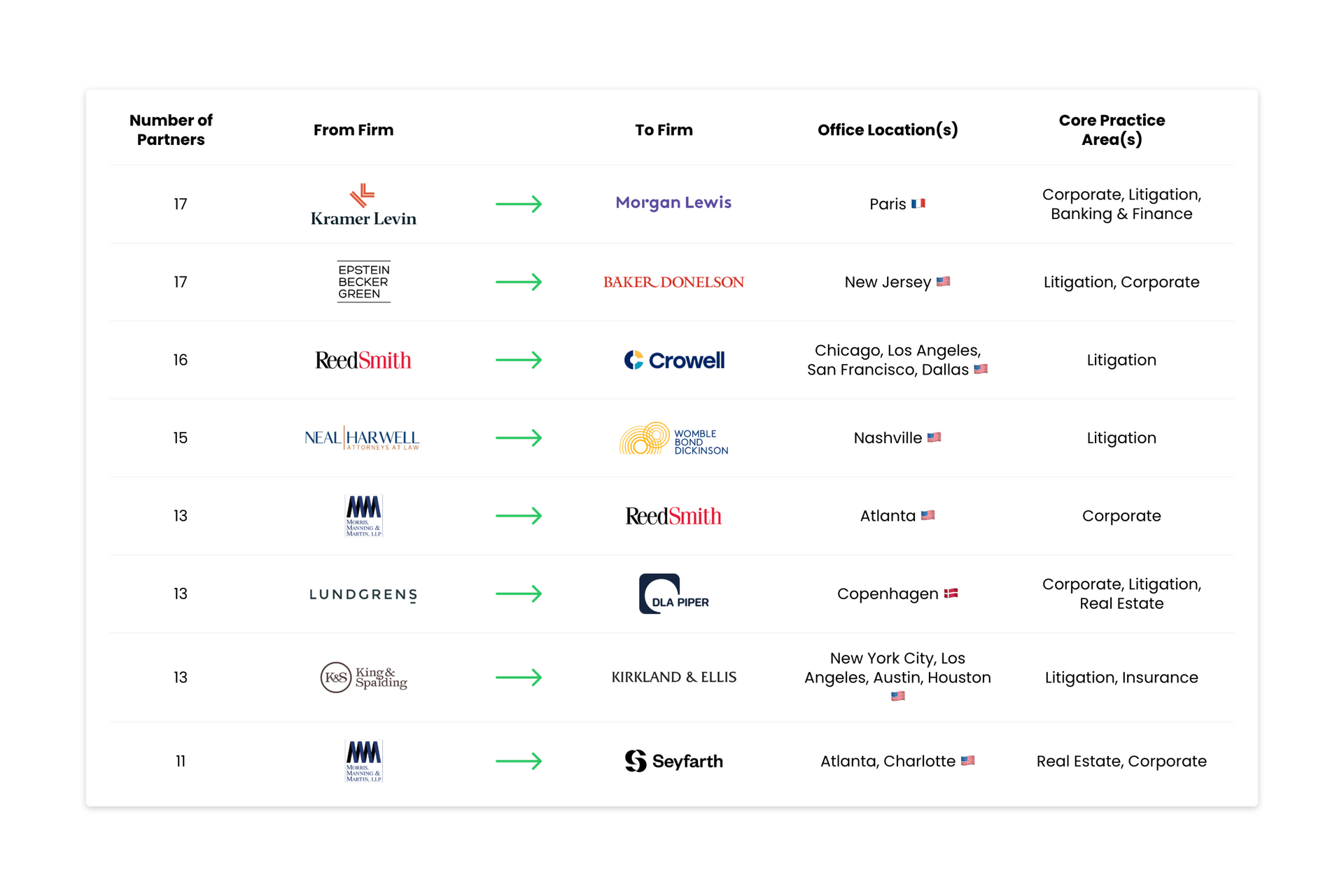Top UK law firms are short 323 female partners (and that gap mightn’t close any time soon)
A 30/70 split of women to men in partnership positions by 2020 has long been held as a laudable goal for the UK legal industry — but unless things change, it’s unlikely to happen anytime soon.
That’s one of the big findings from an independent projection analysis we at Pirical ran recently. Using Pirical Legal Professionals (the world’s most innovative search engine and dynamic knowledge-base of global legal talent and firms), Pirical modelled the gender split across partners in the UK and New York, pulling together data from news articles, firm websites, trade representative bodies, and more.
The results point to a shortage of female partners across the industry.
The gender split in general
A 2013 Department of Business Innovation & Skills survey outlined the case for diversity in most UK industries, noting potential boosts to productivity, profit, employee specialisation and lower leave rates. Subsequent studies have looked at diversity laggers. In 2017, a report by McKinsey singled out the legal industry in particular.
The legal industry gets a bad rap when it comes to diversity, but we wanted to separate fact from fiction and dive into the numbers.
To start, we looked at the current split between 45,782 fee-earners across law firms in the UK, and found a fair split between men (50.6%) and women (49.4%). However, this balance tips the higher up the ranks you go - of 15,569 partners in private practice UK firms, 71.0% are men, while only 29.0% are women.
Figure 1: Gender split across associates and partners in the UK
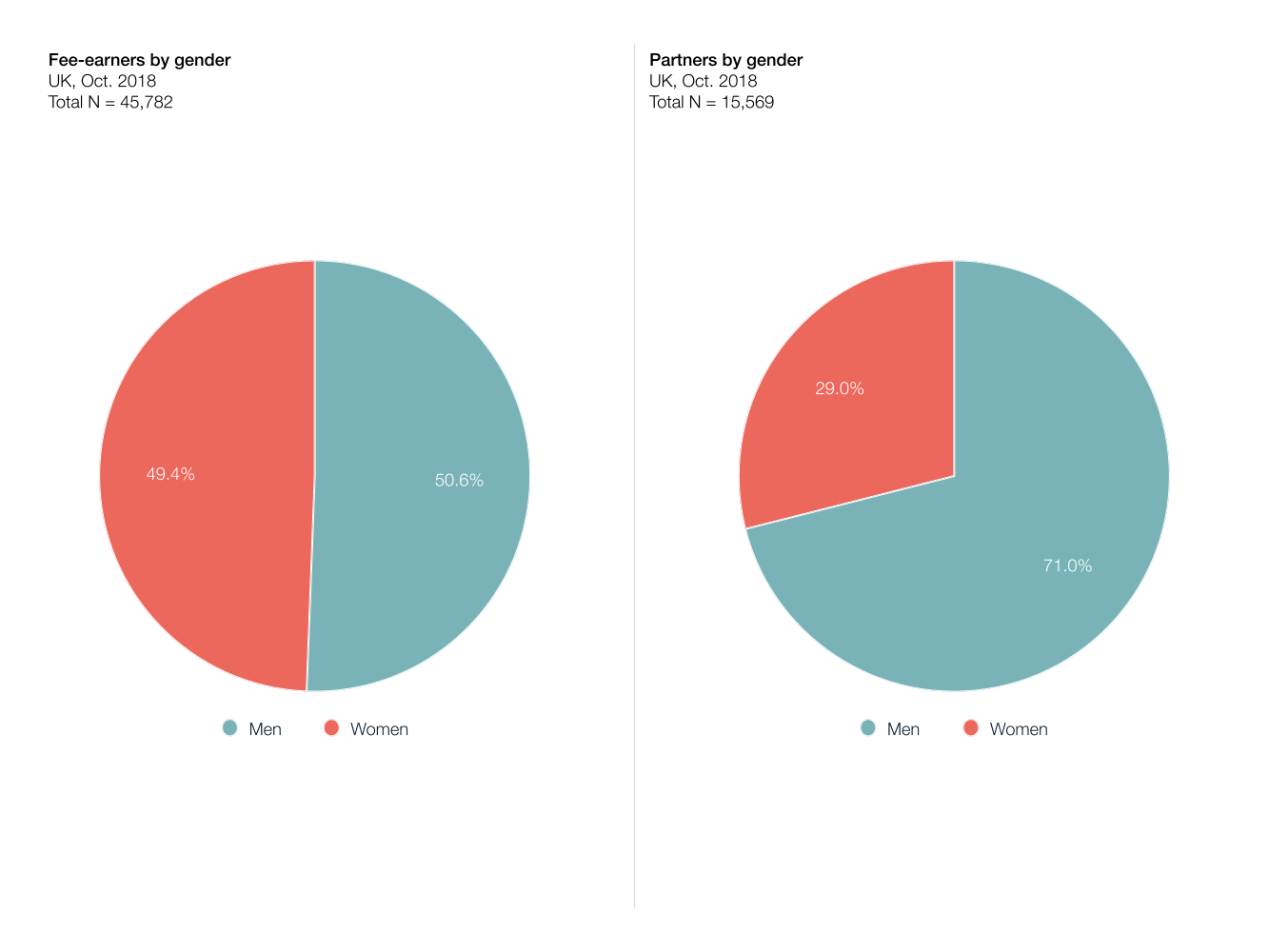
Diving deeper, the team looked at how many women were admitted to the roll over the past 50 years, and found that women have made up the majority of new admissions since 1994.
The big jump came in the early to mid 1970s when the women who grew up in the progressive Sixties finished university. The climb has been precipitous - from 10% in 1970 to 50% in 1994. Since then, growth has slowed down to reach a stable 60% around 2008 where it has remained since. ( One of our clients quipped that the spike in the naughties might have something to do with the release of Legally Blonde.)
Figure 2: Proportion of women among new admissions to the roll
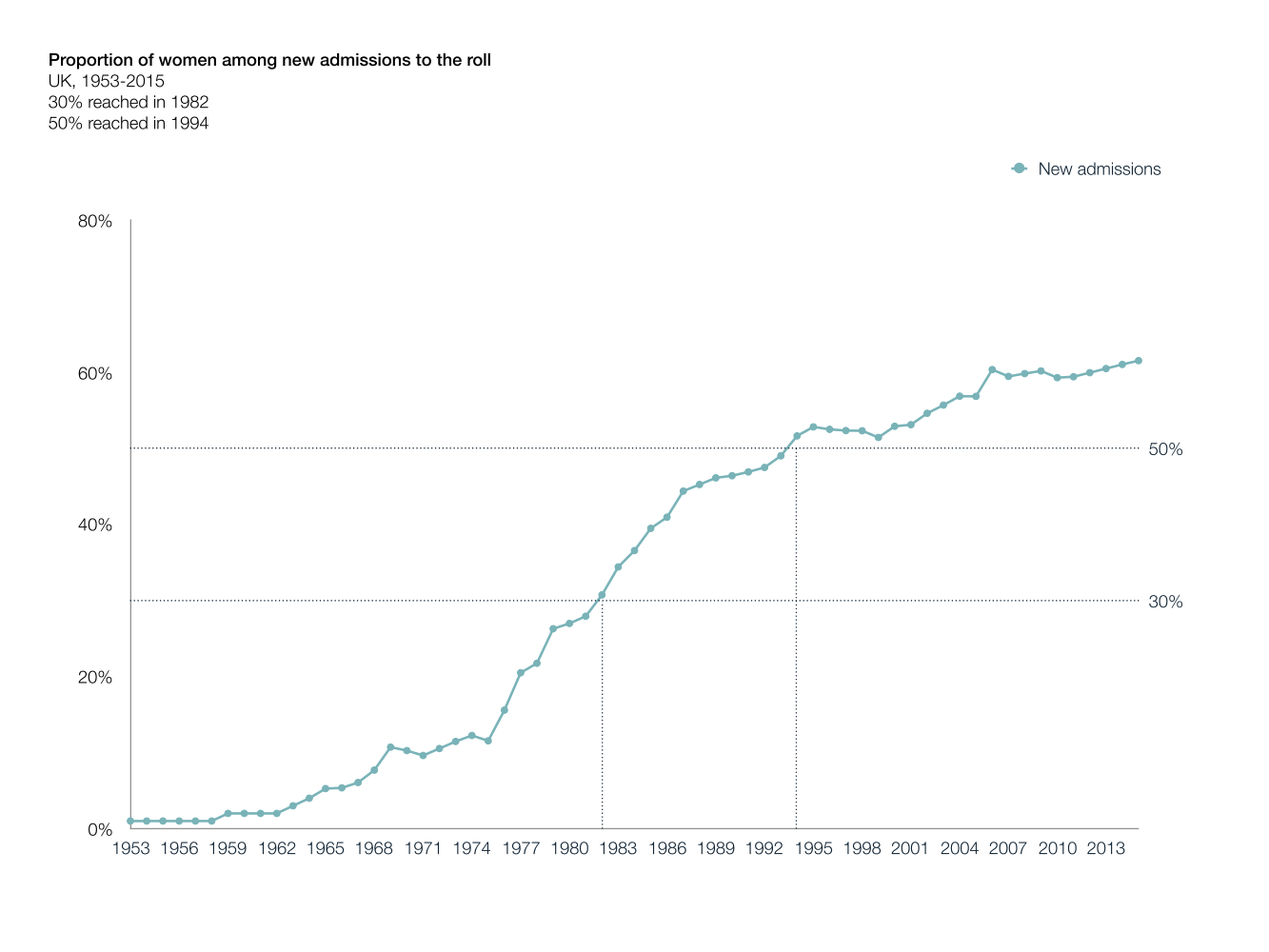
The team were curious as to why, despite the 60/40 split of women to men on the roll, more female partners have not risen to the top.
The difference between firms is vast
The UK average only tells part of the story of the female partner gap. When you look at individual firms, clear leaders and laggards emerge.
Of the leaders, Irwin Mitchell and Shoosmiths are the only 2 top firms to have passed the 30/70 goal, with 43.1% and 34.5% female partners respectively. Meanwhile, the laggiest have just 13.9% and 14.3% female partners.
Figure 3: Proportion of women partners in the UK
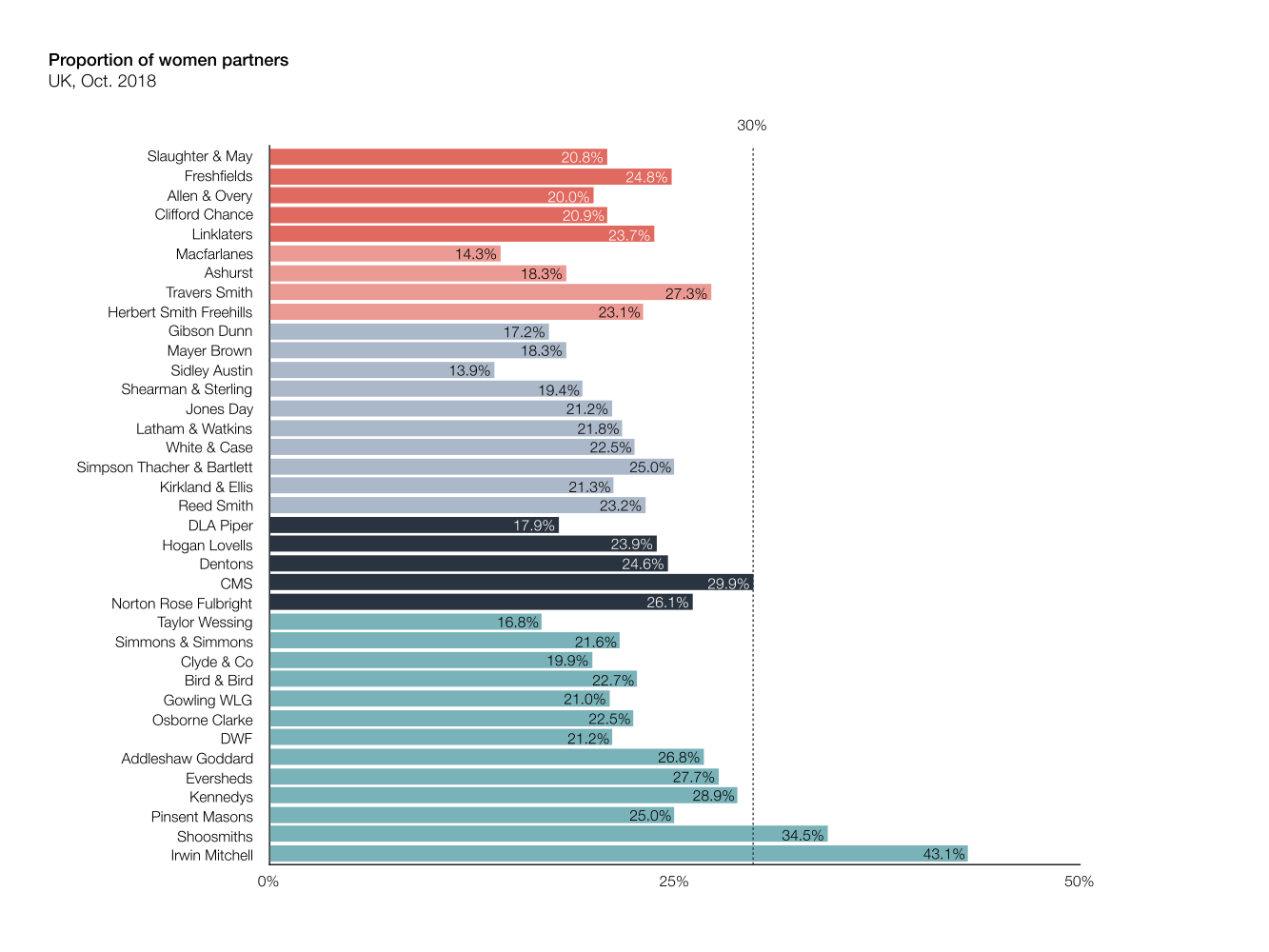
“We take diversity very seriously. While we’re not there yet, we’ve made significant progress toward our goals over the last few years”, a global Head of Diversity told us.
Among the top 37 firms in the UK, the number of female partners needed to achieve an industry average of 30% is 323.
“Some firms need an additional 29 female partners. For others, it’s only 3 or 5,” says Jason. “At least now each firm has a number to aim for, if a 30/70 split is the goal.”
Figure 4: Women partners needed in the UK to achieve 30% of female in the UK partnership
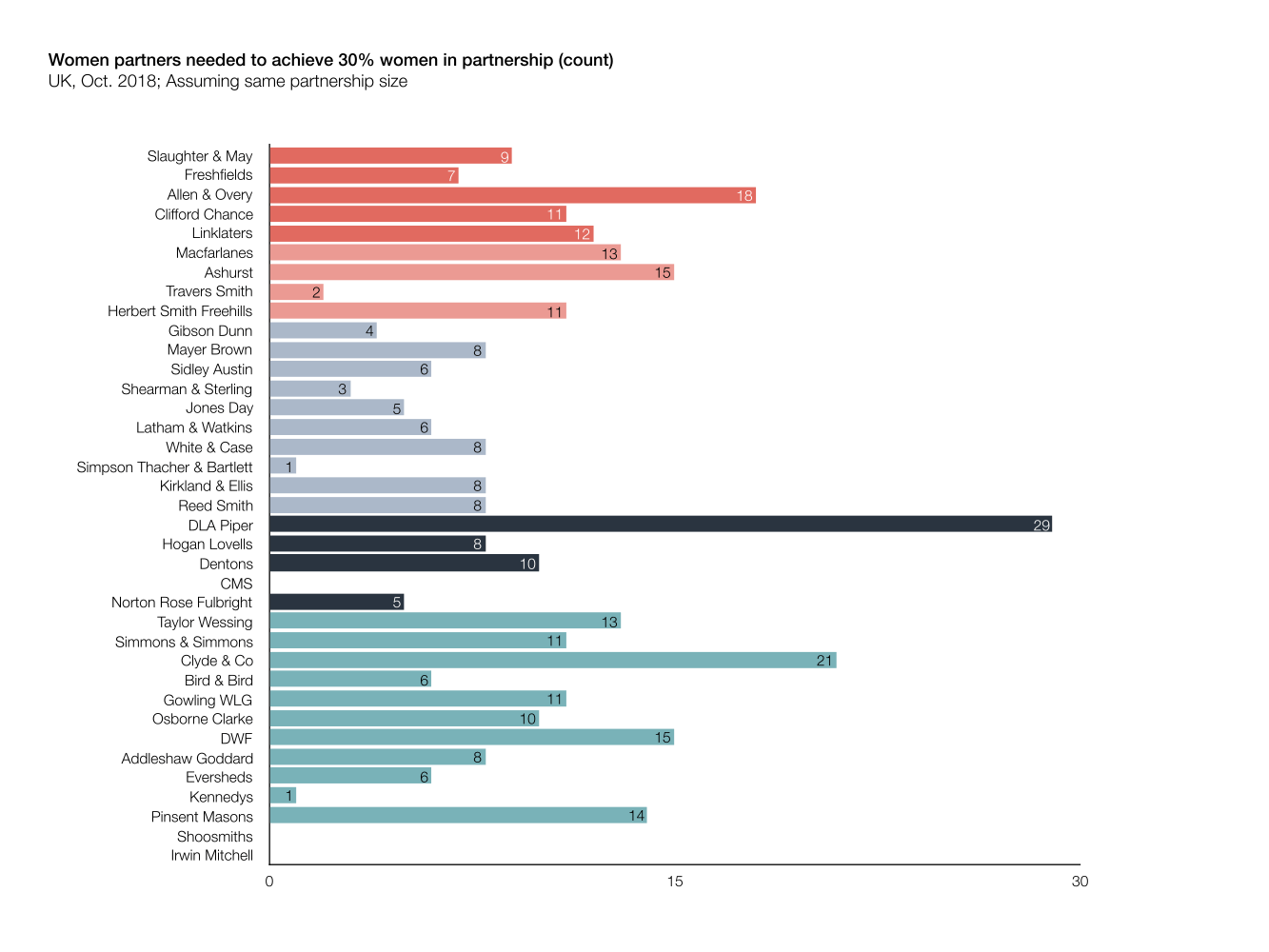
It’s a similar story in the United States. As a point of international comparison, we ran the numbers for New York and found that the average proportion of female to male partners in the top US firms sits at 21.1%.
Figure 5: Gender split across associates and partners in New York
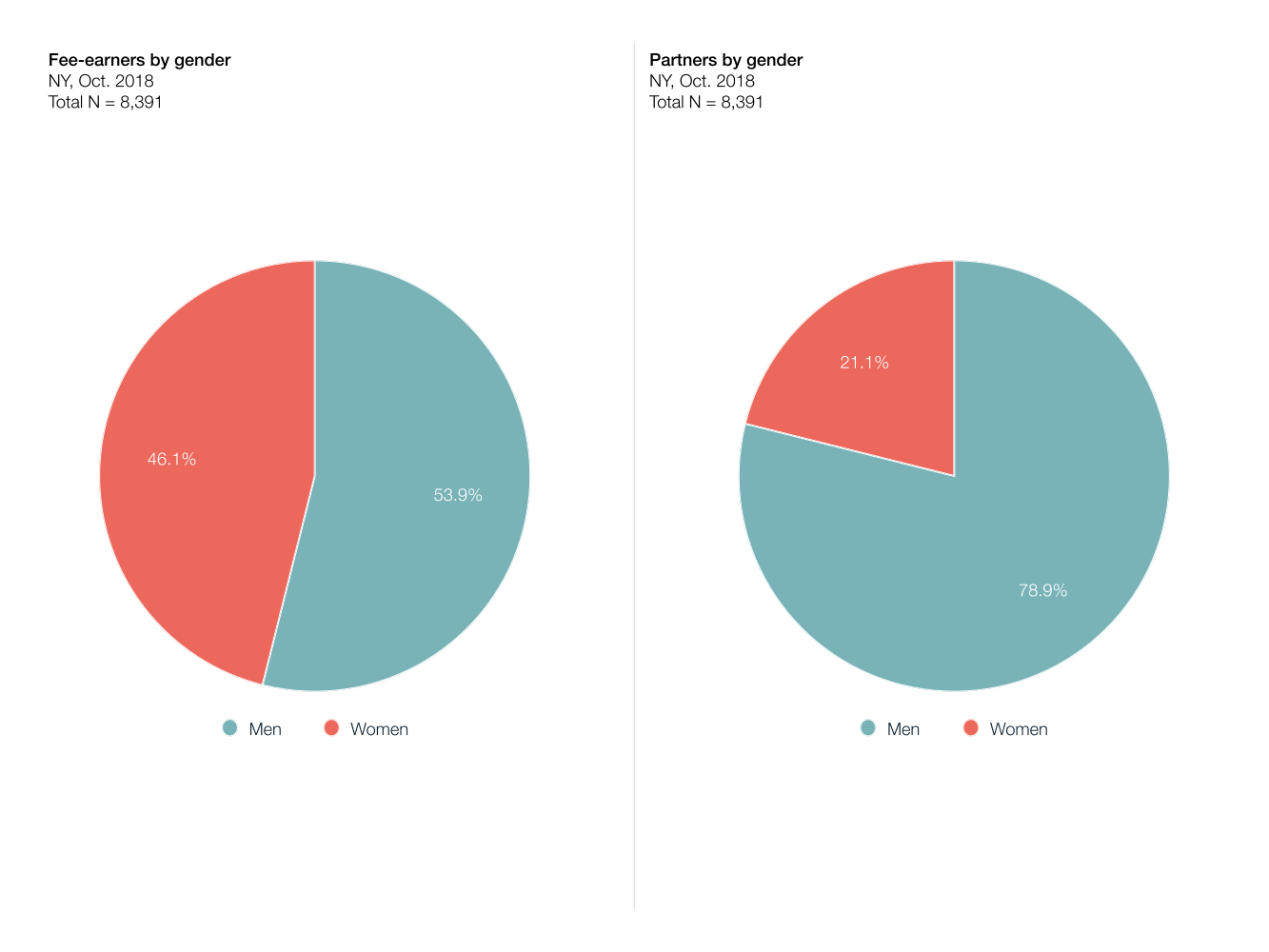
For context, New York enjoyed a historical ‘head start’ in terms of women admitted to the roll. Over the years 1950-68, women in New York made up to 10-15% of new admissions (in the UK, it was close to nil). But as those numbers grew in the UK, growth in the Empire State was slower — only in 2004, a full decade later than in the UK, women’s admission rates in New York crossed the parity line.
To reach a 30/70 female to male partner split in New York, an additional 265 female partners are needed among the state’s top 20 firms.
Figure 6: Proportion of women partners in the New York partnership
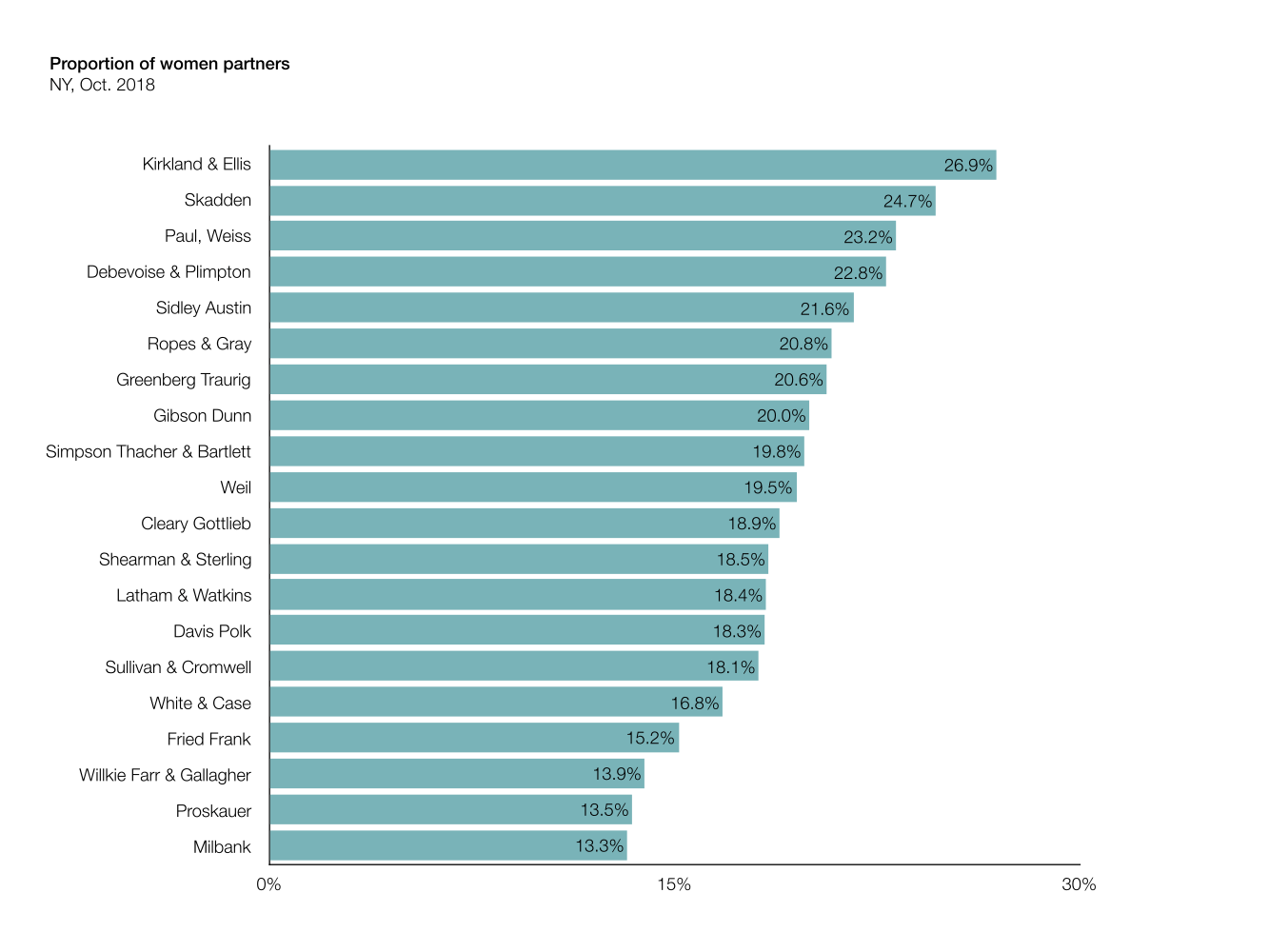
The UK cliff is a myth - decline is gradual
So what does the decline in participation look like?
Counter to the common belief that women drop off in huge numbers during their third and fourth years post-qualification (PQE 3-4), called the “cliff”, the decline in the UK is actually gradual and sets in at PQE 7.
Women in the UK are engaged right through PQE 3 and 4, making up the majority of the legal workforce at a high of 59% in PQE 6.
Figure 7: Percentage of women who are associates by PQE year
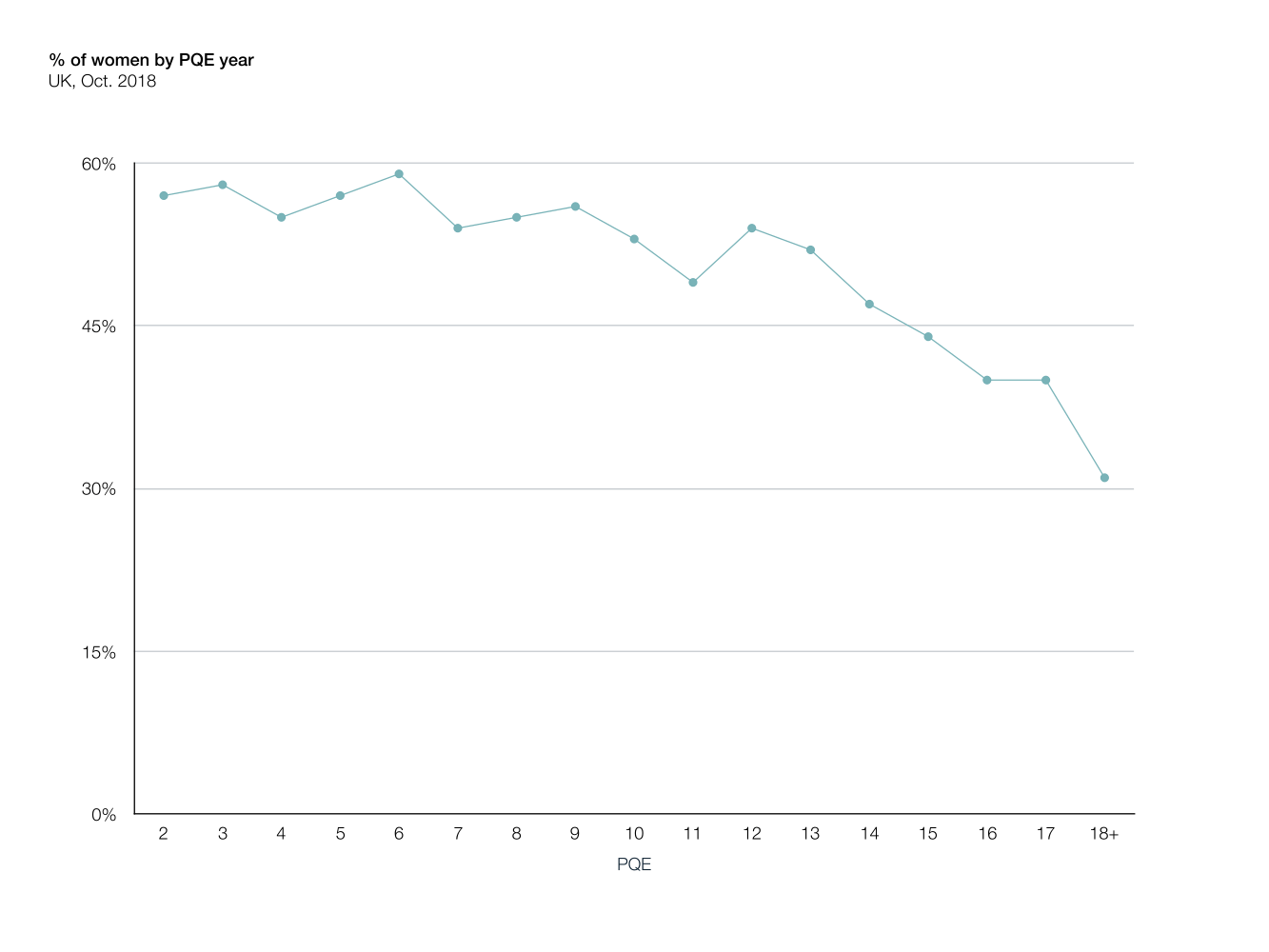
Something else happens around this time. During the course of PQE 5 to PQE 6, a 4% divergence opens up between the proportion of partners to non-partners among women and men — many more men get promoted to partner in their fifth and sixth year post-qualification than women. This is the origin of the female partner gap.
Figure 8: Percentage of fee-earners who are “Associates” or “Senior Associates” by PQE
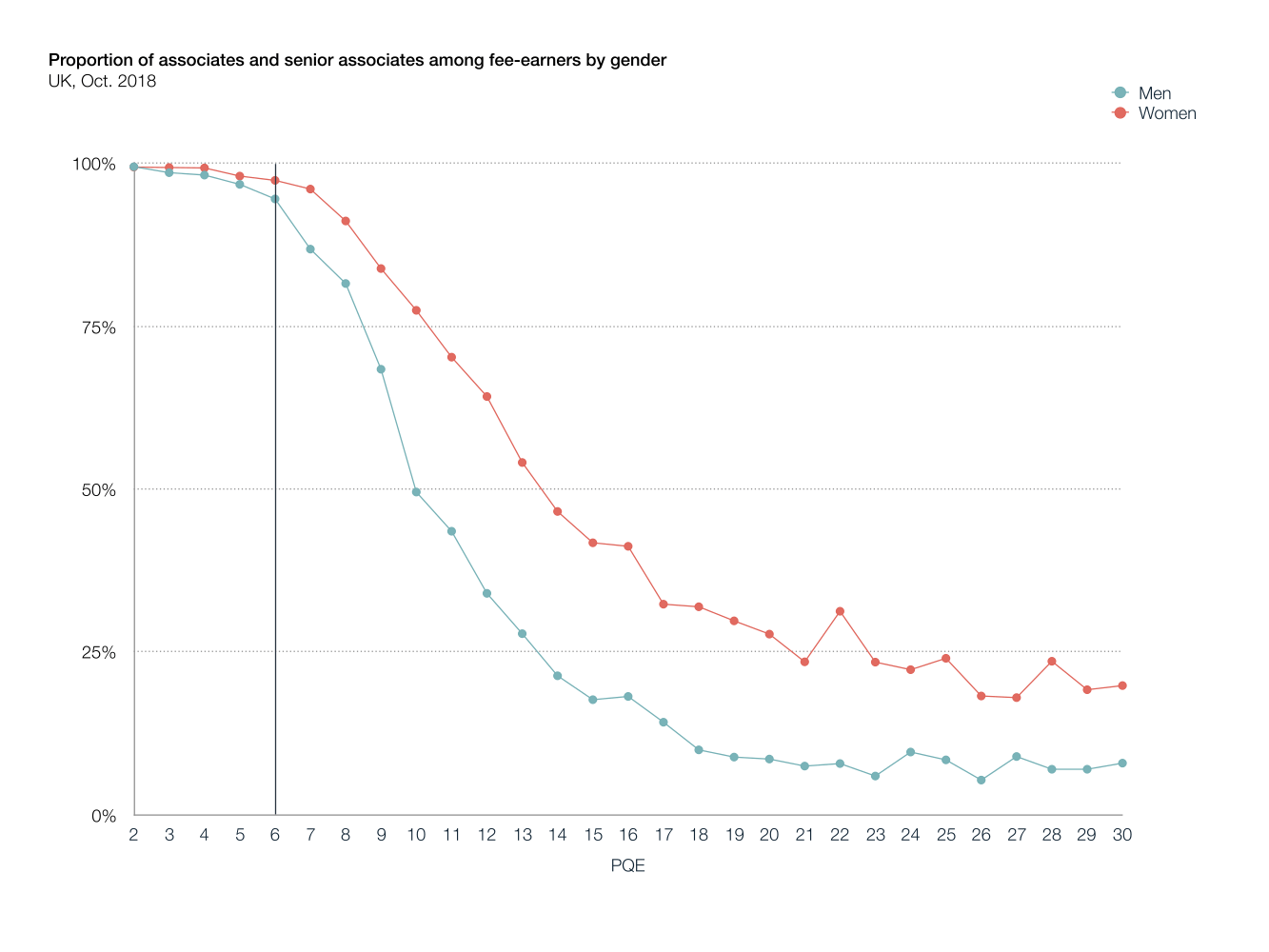
The lines can essentially be read as “non-partners”. So e.g. at PQE 10, 50% of men are non-partners, all the while 76% of women are non-partners.
The male head start only grows from there, to its widest at 27% in PQE 14, resulting in a very heavy skew toward men in the middle of most firms - which seems to perpetuate the effect over time as more men select more men up.
Firms who want to intervene should aim their activities at PQE 5, one year before the divergence starts opening up.
In New York, it’s the same — but different. A similar divergence appears at PQE 6, with 3% more men than women being promoted to partner positions in that year of experience. At PQE 12, that divergence has grown to 19%.
That said, there is a clear ‘cliff’ seen in the legal careers of NY women which isn’t seen in the UK. Between PQE 6 to 10, the proportion of women to men in the NY legal workforce drops from 48% to 32%.
Closing the gap is slowly becoming a commercial must rather than a bonus for the employer brand: As Yahoo Finance reports, 170 GCs and Chief Legal Officers in companies such as Etsy, Heineken USA, and Mozilla have published an open letter to law firms, threatening to withdraw their business from companies who don’t show results with regards to diversity. It won’t take long before this trend reaches the UK.
Understand the data before tackling the problem
Mathematically speaking, 30/70 by 2020 is impossible unless firms start creating more women partners across the industry. Using Pirical Legal Professionals , we mapped some scenarios to understand the impact of certain drivers. It would take an unrealistic doubling of partner promotion rates (to 50%) for the industry to stand a chance of achieving 30% within any reasonable time.
Law firms can use our insights tools to better understand their individual situation. At the beginning of an effective cure usually stands a correct diagnosis, which Pirical can provide.
For example, one firm requested a deep-dive analysis into three levers: attrition, lateral hires, and promotions in order to understand the sensitivity between them and to craft their diversity strategy based on these insights. They said, “Pirical’s data is invaluable — now we’ve been able to define the most effective diversity strategy for our firm.”
And if understanding the subtle dynamics of the gender gap in your firm is an important priority for you, contact us for an initial consultation.
Subscribe to the latest data insights & blog updates
Fresh, original content for Law Firms and Legal Recruiters interested in data, diversity & inclusion, legal market insights, recruitment, and legal practice management.



